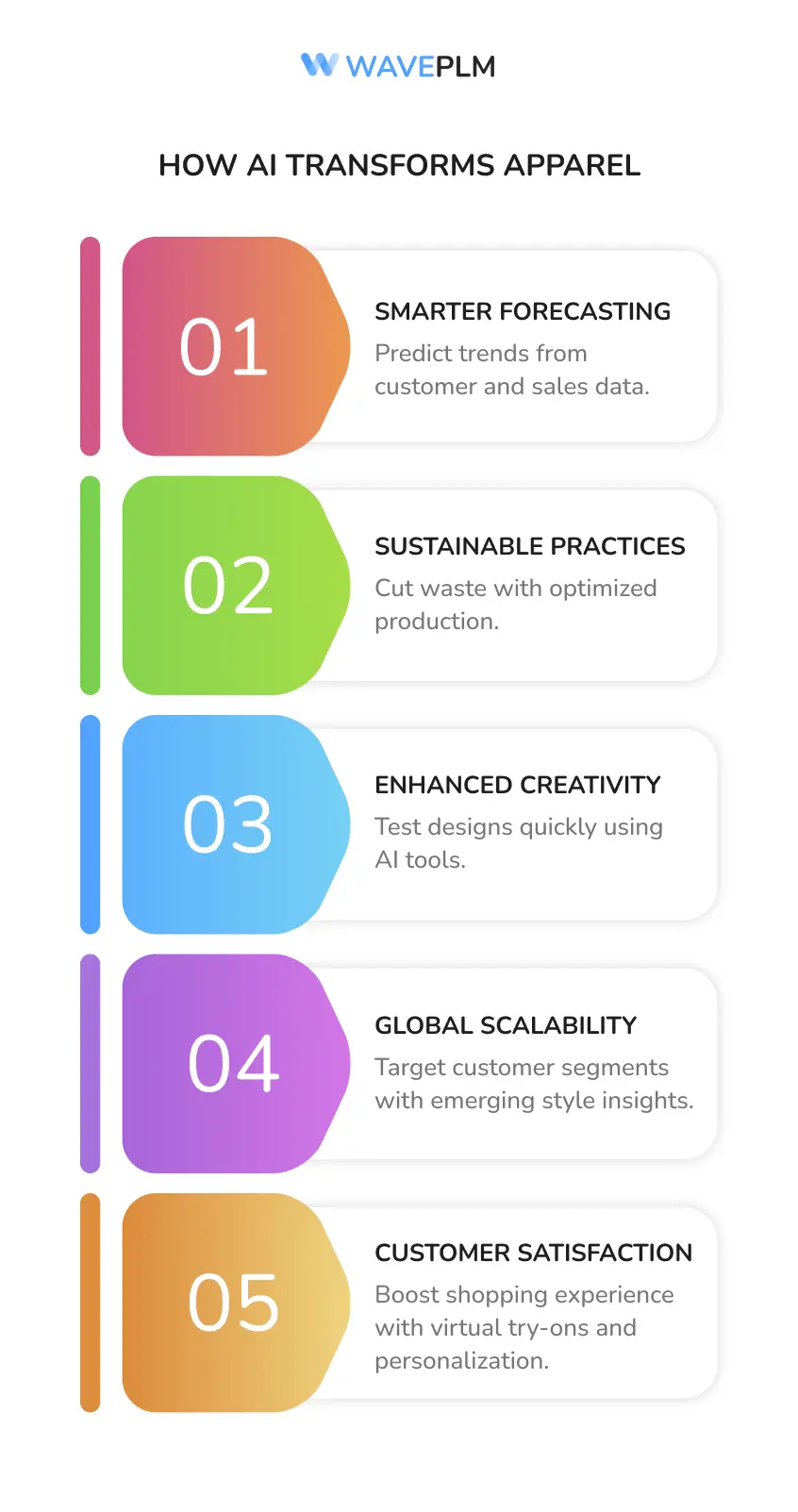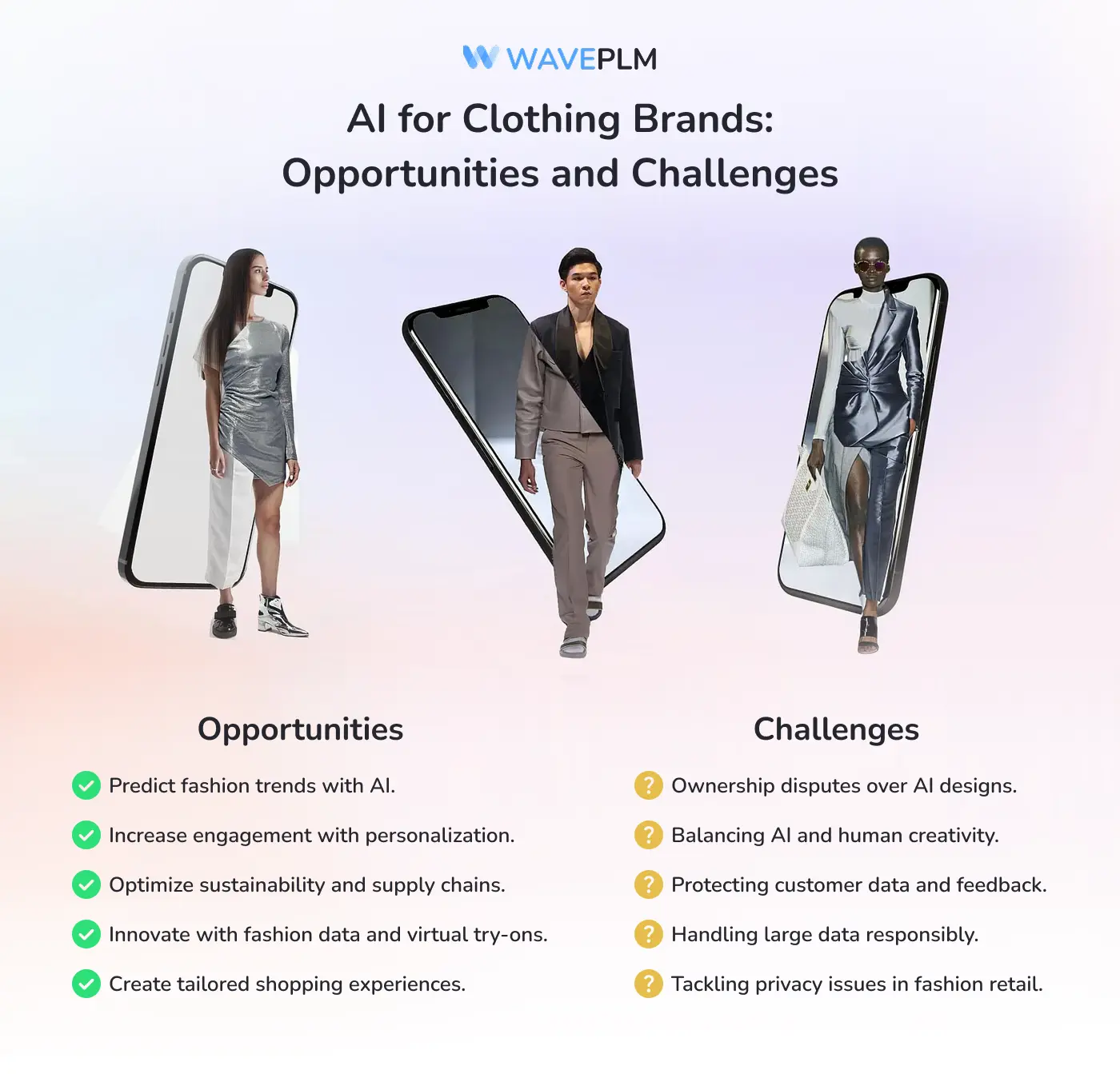
Introduction
The fashion industry evolves quickly. Fashion trends emerge from social media platforms overnight and vanish just as fast. Traditional fashion brands struggle to keep up with customer behavior, supply chains, and customer engagement. Artificial intelligence has started to transform this cycle, making it possible to anticipate market trends, enhance customer satisfaction, and introduce innovative solutions.
The rise of the artificial intelligence clothing brand is not about removing human creativity but about empowering it with ai tools. Algorithms can analyze historical data, predict fashion trends, and deliver personalized shopping experiences. Combining human imagination with artificial intelligence AI creates an exciting shift in the fashion world and builds a more efficient, sustainable, and responsive fashion ecosystem.
What Is an AI Clothing Brand?
An AI clothing brand is a label that uses ai algorithms and machine learning to design, market, and produce apparel. These brands rely on customer data, past purchases, and browsing history to predict style preferences and offer engaging shopping experiences. Unlike traditional fashion brands, AI-driven labels can design at scale, adapt quickly to customer feedback, and anticipate trends before they become mainstream.
Key Features of an AI-Generated Clothing Brand
|
Feature |
How It Works |
|---|---|
|
AI-Generated Clothing Design |
Ai models and computer vision create designs from historical data and emerging style patterns. |
|
Personalization |
Customer preferences drive design through AI-powered recommendations. |
|
Trend Forecasting |
Algorithms analyze historical data and anticipate trends before they appear in fashion blogs. |
|
Speed-to-Market |
Optimizing supply chains allows fashion companies to react quickly to emerging trends. |
|
Digital Fashion Assets |
Virtual try ons and ai generated models bring collections to life before production. |
The ai generated approach allows brands to test entire collections digitally. Designers can see how garments fit, look, and feel in a virtual environment before they are physically produced. This reduces production costs and creates a more sustainable approach to design.
AI in Apparel: Benefits for the Fashion Industry
AI in fashion is more than a trend—it is a practical solution for many challenges. By integrating ai powered systems into operations, fashion brands can improve inventory management, enhance customer satisfaction, reduce overproduction, and optimize production processes.
Benefits of AI in Apparel
|
Benefit |
Impact on Fashion Brands |
|
Smarter Forecasting |
Ai systems analyze customer data and predict fashion trends using historical sales data. |
|
Sustainable Practices |
Optimize production processes to reduce waste and support sustainable fashion. |
|
Enhanced Creativity |
Designers use ai tools in the design process to test new looks with just a few clicks. |
|
Global Scalability |
Fashion brands adapt to specific customer segments by identifying emerging style patterns. |
|
Customer Satisfaction |
Virtual try ons and personalized shopping experience enhance customer satisfaction. |
In addition, AI-driven inventory management minimizes unsold stock and helps companies improve supply chain optimization. By analyzing customer data, fashion companies anticipate trends, balance supply with demand, and meet consumer preferences more accurately.

Digital Fashion and Virtual Clothing
Digital fashion is one of the fastest-growing innovations in the apparel industry. Virtual try on features, 3D-rendered garments, and online fashion shows allow consumers to experience clothing in new ways. Influencers, gamers, and social media platforms are already showcasing digital-only garments.
Why Digital Fashion Matters
|
Advantage |
Explanation |
|
Low Costs |
Digital garments skip fabric and reduce production processes. |
|
Eco-Friendly |
Sustainable practices lower the carbon footprint. |
|
Creative Freedom |
Designers experiment with bold ideas using ai powered chatbots and natural language processing tools. |
|
Marketing Strategies |
Fashion marketing uses digital assets on social media platforms to boost customer engagement. |
Future fashion trends will often start digitally before hitting stores. This approach enables fashion designers and brands to test consumer preferences, analyze data, and refine designs without wasting fabric. Virtual try ons enhance the online shopping experience by allowing customers to see fit and style instantly.

How PLM Software Powers AI Clothing Brands
PLM (Product Lifecycle Management) is a digital supply chain platform that integrates AI into supply chains. It connects designs, vendors, and market trends to real-time production. PLM provides a structured way to integrate ai systems into the design process, production processes, and inventory management.
PLM Features for AI Clothing Brands
|
PLM Feature |
Role in Development |
|
Design Management |
Manage AI-generated designs and integrate them into the design process. |
|
Vendor Collaboration |
Share forecasts and optimize supply chains with vendors. |
|
Quality Control |
Use AI tools to analyze data and detect risks. |
|
Costing Optimization |
Align pricing and sourcing using AI insights. |
|
Forecasting Tools |
Analyze historical data to anticipate trends and align production. |
When fashion brands integrate AI with PLM, they create a powerful framework that combines design, sustainability, and customer satisfaction. This digital supply chain platform supports sustainable practices, enhances customer engagement, and streamlines production processes.
Examples of AI-Generated Clothing Brands
Several fashion companies already embrace AI-generated collections:
- The Fabricant – A digital fashion pioneer using AI tools for virtual designs.
- Stitch Fix – Uses AI algorithms and past purchases to recommend personalized outfits.
- Deep Agency – Creates ai generated models for fashion marketing campaigns.
- Rephrase AI – Provides innovative solutions for adaptive fashion marketing.
Each of these brands shows how artificial intelligence AI transforms design and customer engagement. From virtual try ons to personalized shopping experiences, these businesses show how analyzing customer data and integrating ai algorithms enhances customer satisfaction.
AI for Clothing Brands: Opportunities and Challenges
Opportunities
- Predict fashion trends with ai powered systems.
- Enhance customer engagement using personalized shopping experience features.
- Expand sustainable practices and supply chain optimization.
- Deliver innovative solutions through fashion data and virtual try ons.
- Provide an engaging shopping experience for specific customer segments.
Challenges
- Ethical debates around ownership of ai generated designs.
- Balancing machine learning with human creativity in the design process.
- Protecting customer data and customer feedback.
- Managing extensive customer data responsibly.
- Addressing challenges in fashion retail related to data privacy.

Future of Fashion Technology
The fashion retail sector will not abandon human creativity. Instead, integrating AI allows ai systems to co-design, anticipate trends, and support fashion trend forecasting. Designers still set the creative direction, but AI improves production processes, analyzes historical sales data, and enhances customer satisfaction.
Future fashion trends will rely on artificial intelligence clothing brands, sustainable practices, and virtual try ons. With PLM as a backbone, the fashion industry can improve customer feedback, inventory management, and fashion data insights. Fashion marketing will use ai powered chatbots and social media platforms to enable customers and strengthen customer engagement.
Fashion designers will continue to create visionary ideas, but ai tools will streamline execution. From supply chain optimization to analyzing historical data, AI ensures fashion brands remain competitive and aligned with emerging trends.
Practical Template for Fashion Brands Exploring AI
|
Step |
Action |
Example Tool |
|
1 |
Analyze customer data and purchase history |
Wave PLM, analytics dashboards |
|
2 |
Train AI models to identify emerging trends |
AI design software |
|
3 |
Create digital fashion prototypes |
3D modeling platforms |
|
4 |
Share designs across supply chains |
Digital supply chain platform |
|
5 |
Use natural language processing and ai powered chatbots |
Improve customer engagement |
|
6 |
Forecast demand with historical sales data |
AI forecasting platforms |
|
7 |
Launch digital-first collections via social media platforms |
Fashion marketing strategies |
|
8 |
Apply computer vision to analyze customer behavior |
AI imaging tools |
|
9 |
Use ai powered dashboards for inventory management |
PLM integrated tools |
This template helps fashion brands experiment with integrating ai in fashion while balancing sustainability, creativity, and customer engagement.
Conclusion
The AI clothing brand represents the future of the fashion industry. Ai in fashion combines machine learning, computer vision, and customer behavior analysis to anticipate trends and deliver innovative solutions. By analyzing historical data, leveraging ai algorithms, and optimizing supply chains, brands create better designs and enhance customer satisfaction.
When combined with PLM, ai for clothing brands transforms production processes, enables customers with a personalized shopping experience, and ensures sustainable fashion growth. The next wave of fashion trends will not just appear on the runway—they will come from ai generated creativity in the digital space. Fashion companies that adopt these systems today will lead the apparel industry tomorrow.





Leave a Reply